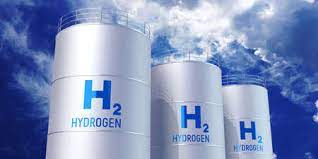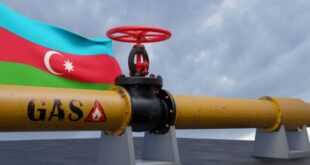Saudi Arabia, the Middle East’s leading energy producer, continues to pour significant resources into development of low- and zero-carbon hydrogen, apparently determined to capture a major share of the emerging global industry.
According to news reports this week, the Kingdom’s Public Investment Fund (PIF) has created Energy Solutions Company to finance ‘green hydrogen’ power production with up to $10 billion in investment capital.
A formal announcement is expected soon. The news follows on a statement by PIF governor and Aramco chairman Yasir Al Rumayyan earlier this year, that Saudi Arabia wants to invest more in green hydrogen and have 15% of ‘blue hydrogen’ production globally.
While a national hydrogen strategy first appeared in outline in 2020, the country has moved forward gradually under guidance of the Saudi Ministry of Energy. Its diverse hydrogen pathways include numerous initiatives of state oil company Saudi Aramco and affiliates and the new NEOM project.
Significant obstacles remain as Saudi industries confront basic cost factors and regulatory uncertainties in foreign markets, which combine to preclude a rapid expansion into low-carbon hydrogen.
Yet government and industry continue to foster new domestic markets while they consider future opportunities for large-scale export. Their pursuit of multiple low-carbon hydrogen paths could maximize the probability of achieving profitable ventures.
Saudi regions
Aramco is deploying considerable industrial capacity to capture carbon in support of petroleum production. Its work on carbon capture and storage (CCS) is laying the infrastructure to eventually produce large quantities of blue hydrogen, and derivatives including ammonia and synthetic fuels, using fossil fuels with emissions captured and stored.
At the same time, the Kingdom is beginning to deploy its vast renewable energy resources to produce large amounts of ‘green’ hydrogen, with potential for much more.
Regional distinctions are apparent, with blue hydrogen and carbon capture in the industrial hubs of the Eastern Province where the petroleum industry is centered. Yet the east also offers potential for future carbon-free hydrogen, with ample sun and wind resources even near Aramco’s headquarters in Dhahran.
Meanwhile the country’s northwest, with magnificent wind and solar resources, is home to the NEOM Green Hydrogen Company (NGHC), now developing the world’s largest such project with first production anticipated next year.
Aramco’s approach
Aramco, its subsidiaries and partners, are working on an array of schemes for carbon capture and blue hydrogen production. Aramco’s stated objective is to produce 11 million tons per annum (mtpa) of blue ammonia by 2030.
The company has gained considerable experience in carbon capture at one of the world’s largest CCS plants at Hawiyah in the Eastern Province. In operation since 2015, it captures 800,000 tonnes CO2 per year from the Hawiyah gas processing plant, which is transported to the Uthmaniyah oil reservoir to be injected for enhanced oil recovery.
Aramco has worked with the Ministry of Energy since 2022 to establish a much larger CCS hub. The company has signed an agreement with Linde and SLB to build the hub in the Jubail industrial zone to capture up to 9 million metric tons of CO2 per year starting in 2027.
The Jubail CCS Hub will facilitate capturing CO2 from Aramco and neighboring industrial plants in the zone, according to the company’s announcement, although it is not clear how much of the hub will be dedicated to blue hydrogen production.
This year the company made a significant venture into low-carbon hydrogen production with its acquisition of a 50 percent stake in the Blue Hydrogen Industrial Gases Company (BHIG) in Jubail. The company is a wholly owned subsidiary of Air Products Qudra (APQ), a joint venture between Air Products and Qudra Energy.
BHIG will deploy CCS to produce lower-carbon hydrogen, which it plans to supply through a pipeline network in the Eastern Province, serving regional customers with the option for Aramco to offtake hydrogen and nitrogen. The company will operate in coordination with Aramco’s ongoing CCS activities.
Aramco’s work to build CCS infrastructure is complemented by its majority-owned subsidiary SABIC (Saudi Basic Industries Corporation), which operates a carbon capture and utilization plant in Jubail that deploys proprietary technology to capture 500,000 tons of CO2 per year for use in a range of industrial processes.
It was announced this summer that SABIC Agri-Nutrients Company secured natural gas feedstock allocation from the Saudi Ministry of Energy in order to build a plant in Jubail to produce 1.2 million metric tons per annum (mmtpa) of low-carbon blue ammonia, although project cost and operational start date were not provided.
In 2022, Aramco and SABIC Agri-Nutrients received the world’s first independent certifications, issued by the German certification agency TÜV Rheinland, for the production of blue hydrogen and ammonia. SABIC’s expertise in CO2 utilization could complement Aramco’s CCS capabilities, helping the parent company to expand CO2 use beyond storage and enhanced oil recovery.
Other Saudi industries are entering the field with ambitious projects including the petrochemical company Sipchem, currently conducting front-end engineering for the production of 1.2 million tonnes per annum of blue ammonia. The engineering phase is planned to be complete early next year.
Business model shift
Many observers see low-carbon hydrogen and derivatives becoming a core part Aramco’s business, even as the nascent industry continues to face headwinds
“Aramco’s capital expenditure has shifted more toward natural gas developments and low-carbon technologies,” says Rami Shabaneh, Senior Fellow at the King Abdullah Petroleum Studies and Research Center (KAPSARC) in Riyadh.
“As per its Capex guidance for 2024-2026, 10% of its capital will be diverted to its newly established ‘New Energies’ organization covering renewables, CCS and hydrogen initiatives,” he says.
“Its recent 50% acquisition in Air Products Qudra’s BHIG is evidence of its intent to deliver on its blue hydrogen targets and that it can do so competitively.
“However, hydrogen projects will be contingent on finding customers who are willing to sign long-term offtake agreements to finance these projects,” he adds.
Shabaneh is an editor of the wide-ranging compendium on Saudi hydrogen, The Clean Hydrogen Economy and Saudi Arabia: Domestic Developments and International Opportunities (Routledge, 2024).
He sees Saudi hydrogen production expanding with new demand in both foreign and domestic markets.
“I think they will grow simultaneously,” he says. “Both have their pros and cons
“With export projects you are exposed to a larger market allowing you to build world-scale projects, taking advantage of the economies of scale.
“However you are vulnerable to the pace of regulation, infrastructure buildout, and demand for hydrogen in the importing markets that is proving to be slower than anticipated.”
He says that the current divergence in definitions and standards for low-carbon and zero-carbon hydrogen across countries and regions is adding another layer of complexity. So domestic markets will be important.
“In domestic markets, volumes may be smaller,” he says. “But there is potentially stronger alignment between the goals of the government and state-owned enterprises, and other stakeholders to unlock the hydrogen market faster.
“The common denominator, in both cases, is to secure long-term offtake agreements to guarantee cash flow and make the business case for developing these projects.”
Domestic market potential
In 2020, Aramco and SABIC undertook a demonstration shipment of 40 tons of blue ammonia to Japan, where it was used to produce fuel for electric power. In 2022, Aramco partnered with SABIC AGRI-Nutrients to ship 25,000 tons of blue ammonia to South Korea.
These successful demonstrations may show future routes for Saudi low-carbon hydrogen exports. While observers emphasize the great potential of domestic industry hubs, both the NGHC and Aramco continue to express export-oriented ambitions.
“The ambition is certainly there but Aramco is struggling to find buyers for its blue hydrogen due to high costs,” says Jan Frederik Braun, Senior Expert International Hydrogen Economy and Policy (MENA Region) at Fraunhofer ISE. He also served as editor of the recent tome on Saudi hydrogen.
“Even in promising or potential export markets like Japan and South Korea, there is too little regulatory and policy incentive to establish a business case for it, especially regarding demand.”
Regarding the latter, Braun emphasizes the importance of getting hydrogen demand started within the Kingdom’s domestic industrial sectors.
“Too much emphasis is on exporting H2 to lucrative markets like Europe, Japan, and South Korea and too little emphasis is on strengthening the business case for hydrogen domestically and in countries with substantial industrial sectors,” he says.
“In a 1.5°C scenario, for example, Saudi Arabia’s current 2.5 Mt (gray) hydrogen demand could increase well into double digits, making it the country with the sixth highest domestic hydrogen demand by 2050 after China, India, Russia, the US and Japan.
“Although these are primary estimations, they point toward the huge case for applying low-carbon H2 at home instead of a mere opportunistic export focus.”

 Iran Energy News Oil, Gas, Petrochemical and Energy Field Specialized Channel
Iran Energy News Oil, Gas, Petrochemical and Energy Field Specialized Channel



